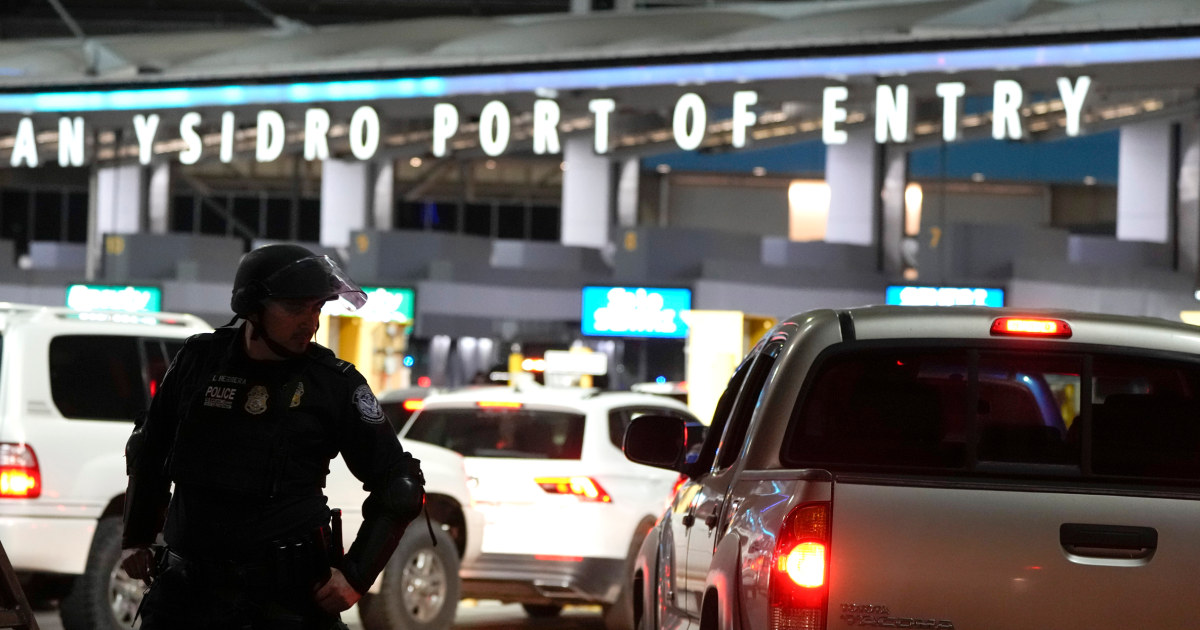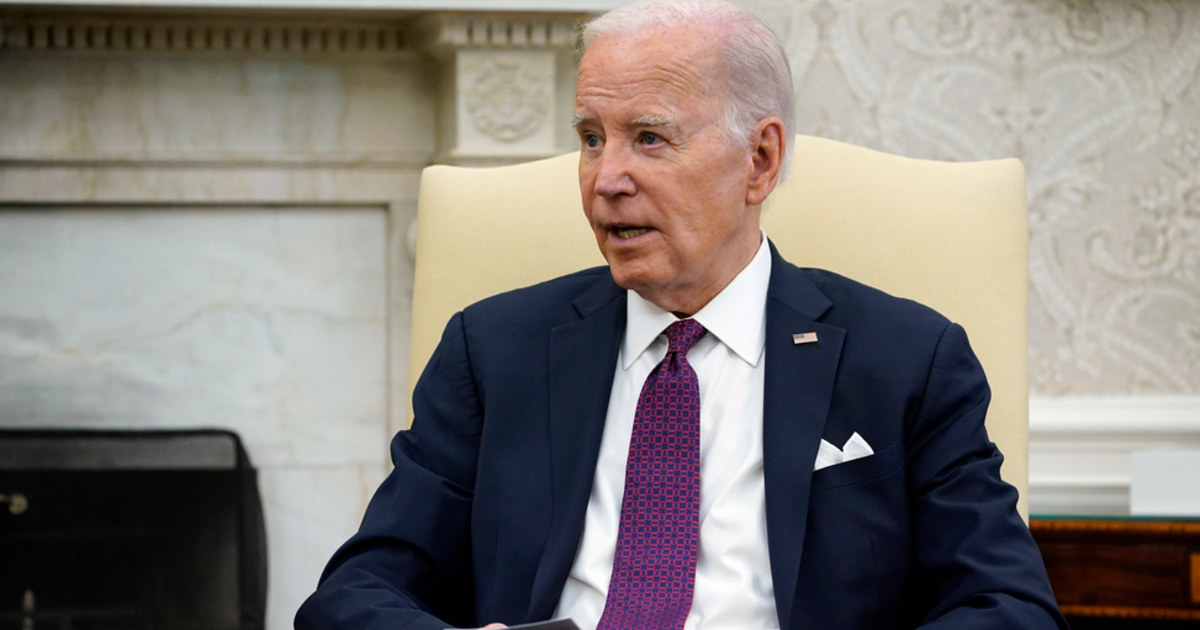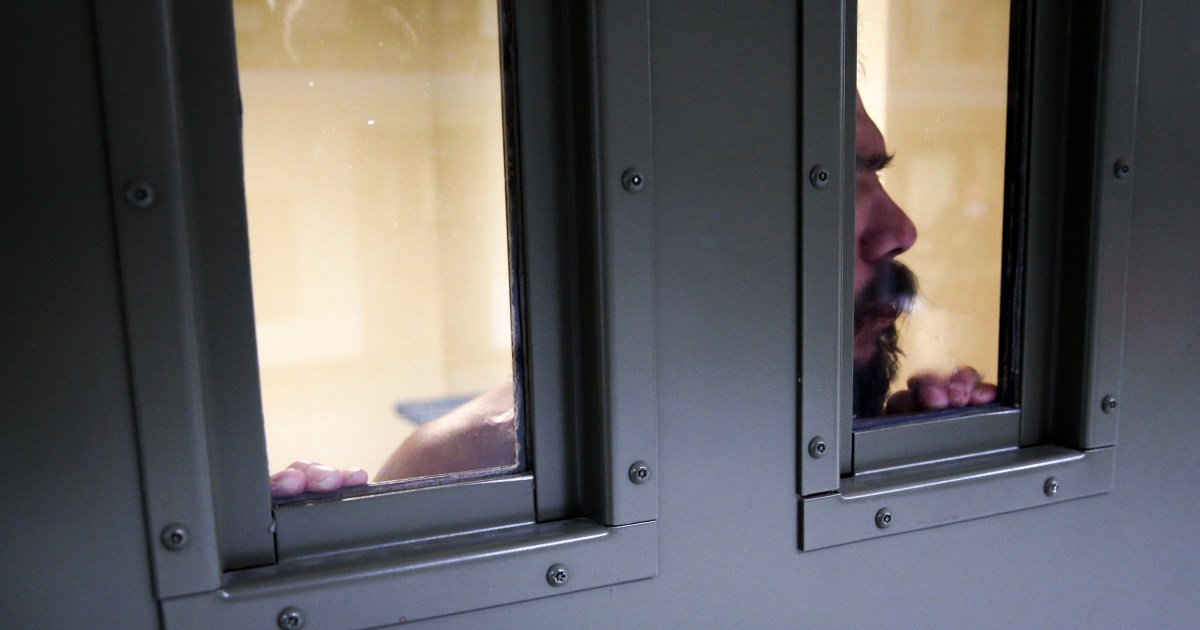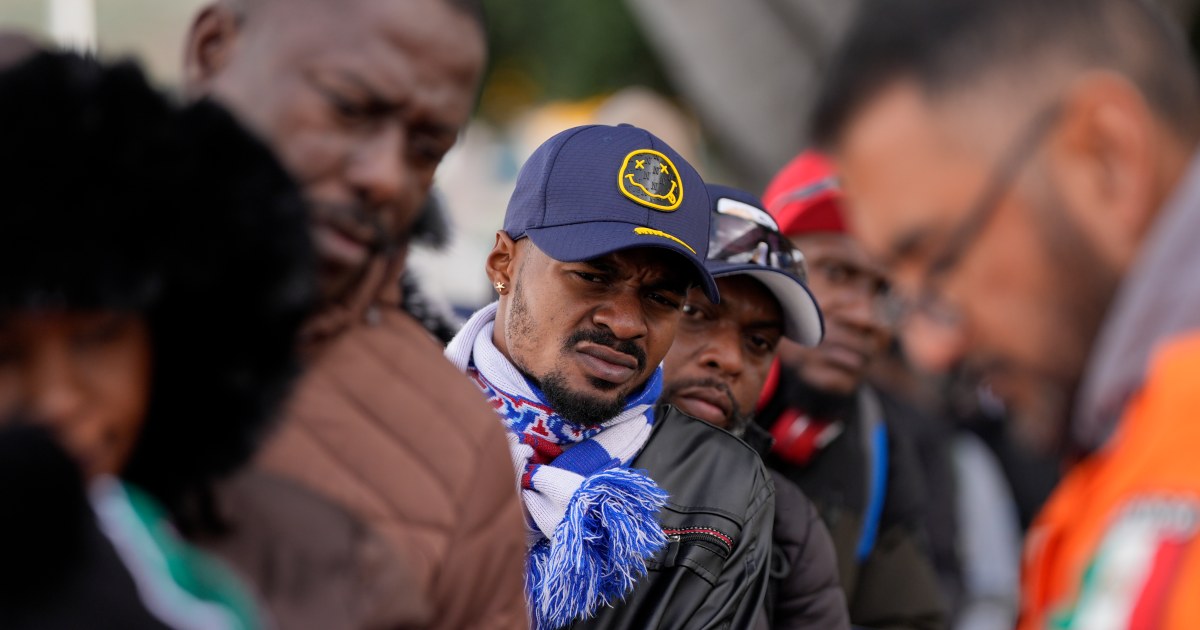- Click to share on Facebook (Opens in a new window)
- Click to share on Twitter (Opens in a new window)
- Click to share on LinkedIn (Opens in a new window)
- Click to email a friend (Opens in a new window)
Trump would suspend these visas due to the pandemic 2:45
(CNN Spanish) - The President of the United States, Donald Trump, is preparing another action to restrict legal migration, this time citing the impact of the coronavirus on the country's economy. Despite a push by President Donald Trump to overcome the pandemic, his government continues to promote immigration measures, citing the outbreak and its cost to the economy.
And amid the pandemic, the government has followed through on a series of measures such as closing the southern border for some immigrants, unless they meet certain requirements. Legal immigration, which has already been affected during the outbreak, is refocusing on deliberations over an immigration decree.
These are some of the measures that the Trump government has taken to curb immigration to the country.
1. Immigration ban during the Coronavirus pandemic
White House readies new limitations for immigrants 0:48In the context of the coronavirus pandemic - where the USA It has been the hardest hit country in the world with more than 2 million cases— Trump announced in June 2020 a new set of restrictions, with which a list of visas that allows immigrants to work temporarily in the US is expected. USA are suspended for a period of time. Among them, L-1 visas for transfers within the company, H-1B for workers in a specialized occupation, H-2B for temporary non-agricultural workers and J-1 visas for exchange visitors, three sources told CNN familiar with the plans.
Exceptions are expected to be made for covid-19 related activities, such as health professionals and food supply related jobs, according to sources.
The latest proposed rule, which still needs to undergo a public comment period and will not take effect immediately, also lists a number of changes that would pose even greater challenges for people seeking asylum in the United States.
Under a proposed change, an individual's asylum claim could face increased scrutiny if the person traveled through at least one country while en route to the United States but did not seek refuge there. The Trump administration applied a similar rule to migrants traveling through Mexico from Latin America, but the latter rule broadens the reach of people who could fall under those restrictions, with some exceptions, as a victim of human trafficking. .
In April 2020, President Donald Trump had already signed a decree prohibiting certain immigration to the United States after ordering a total ban on immigration to the country amid the coronavirus pandemic, which caused job losses. Trump argued that the order was necessary to protect American jobs.
That decree blocked people outside the United States seeking to legally migrate to the country, albeit with exceptions. The order did not affect spouses and minor children of US citizens; healthcare professionals; any member of the United States Armed Forces and their spouses and children; and anyone who enters for police or national security reasons.
Nor does it apply to investor visas and special immigrant visas for Iraqi and Afghan citizens who have worked for the United States government.
Despite this, it is important to note that the pandemic reduced immigration to the country due to border restrictions in several countries; In addition, border restrictions and visa services have been suspended and refugee admissions are paused.
2. The border wall
The border wall was one of the first campaign promises Trump made when launching his candidacy. And he also said that Mexico would pay for it.
So far Trump has faced a series of legal challenges for the construction of the wall, especially for its financing, because Congress, which decides the budget, is divided. In January 2020, a federal appeals court gave the green light to the Trump administration to use a set of funds from the Department of Defense for the construction of the border wall after a lower court prevented it last month.
In January 2019, Trump ended a 35-day government shutdown - allowing a different amount of funding to be raised than the administration's request for the border wall - and then in February Congress reached an agreement to enable some $ 1.4 billion in funding for the wall, far less than Trump had sought. He subsequently declared a national emergency to obtain money from other government accounts to build sections of the wall.
Trump has made repeated claims about "huge amounts of drugs" crossing into the United States from the southern border, despite the fact that most of those drugs pass through ports of entry, and has addressed the issue of human trafficking.
As of January 2020, the wall has around 160 kilometers of construction, well below the 645 kilometers the president promised for last year's closing.
3. The prohibition on resettlement travel
On January 27, 2017, a few days after taking office as President, Trump dealt a severe blow to immigrants: he signed a decree that suspended the resettlement of refugees in the United States and prohibited citizens of seven Muslim-majority countries from entering the country .
Current policy restricts the entry of seven countries to different degrees: Iran, Libya, Somalia, Syria, and Yemen, along with Venezuela and North Korea. Chad was removed from the list last April, after the White House said the country improved security measures. In 2018, the Supreme Court upheld the third version of the travel ban after previous iterations were challenged in court.
In January 2020, the Trump government drew up plans to renew and expand its travel ban list to include immigration restrictions in seven additional countries, according to sources familiar with the process.
The goal, an official said, is "to get governments to comply using the power of access to the United States." Travel restrictions would be tailored to countries, if added, and would not impose a total ban, the official said at the time.
In mid-September 2019, more than 31,000 people had been denied entry to the United States due to Trump's travel ban, a State Department official told CNN.
In April last year, Democrats introduced a bill known as the Non-Prohibition Act, in the House and in the Senate to repeal the ban, but the measure is not expected to pass in the Republican-majority Senate.
4. Separation of families at the border and mass arrests at the border
Under the "zero tolerance" policy that the administration implemented in 2018, thousands of children were separated from their parents after being detained crossing the southern border of the United States. The policy was intended to discourage migrants from reaching the border. And because of that policy, in recent years images of children separated from their families have flooded the media and news programs.
According to a government report, the Trump administration calculated that more than 26,000 children would have been separated between May and September 2018, due to the zero tolerance policy. The Customs and Border Protection Office (CBP) provided those figures to the Office of Management Budget in early May 2018.
The controversial policy caused outrage among activists, lawyers, and the public, and eventually led to a presidential executive order calling for families to be kept together.
However, a November report from last year from the inspector general of the Department of Homeland Security (DHS) denounced that the Trump government was unable to verify the total number of families separated or reunited as a result of its "zero tolerance" policy, due to "General errors" in data tracking. That report found that DHS did not have the information technology system necessary to track separated migrant families.
The department estimated that Border Patrol agents separated 3,014 children from their families while the policy was applied. And estimated 2,155 reunifications in response to a court order. However, according to the report, "without a reliable account of all family relationships," the inspector general "was unable to validate the total number of separations or reunifications."
In addition, the mass detention of families at the border has reported several human rights violations, including overcrowding in detention centers and even violations of minors in foster homes.
The Department of Health and Human Services declined to comment on the allegations in the lawsuit. In an email sent to CNN, he indicated that he does not make statements on specific issues related to ongoing litigation. He also added that the network of facilities and programs of the Office of Refugee Resettlement throughout the country is "dedicated to the well-being of children" and that minors under the agency's care receive "a safe and healthy environment that guarantees access to nutritious food, clean clothing, education and medical services. ”
5. Expand the military presence on the southern border of the United States.
In 2018, the Pentagon sent more than 5,000 National Guard soldiers and a large number of military equipment to the southern border, which borders Mexico, in order to detain Central American migrants who were mobilizing in a caravan to the United States with in order to apply for asylum.
As of December 2019, there were about 3,900 active duty soldiers, and some 2,600 National Guard members deployed in support of the Department of Homeland Security efforts on the southern border, although a defense official said that number will soon decrease to as some overlapping rotary units expire to leave soon
The number of active duty troops on the border peaked at approximately 5,900.
Tasks performed by US troops have included tightening border positions, installing barbed wire, operating mobile surveillance vehicles, and painting border barriers. While troops were initially not supposed to have had contact with migrants, some exceptions have been made to allow the military to better support the Department of Homeland Security.
In addition, after a series of threats from the US In order to increase Mexico's import tariffs if the latter did not stop migration flows, in June 2019, Mexico deployed almost 15,000 soldiers on the border with the United States.
In December, the Border Patrol reported that the arrests of migrants crossing the U.S.-Mexico border illegally decreased for the seventh consecutive month. However, Acting Commissioner of Customs and Border Protection, Mark Morgan, warned that border arrests "are still at crisis levels." He said the average arrests were just over 1,400 a day at the time.
During the height of the migration crisis in May 2019, the Border Patrol on the southwest border arrested 132,856 people, mainly family members from the countries of the Northern Triangle of Guatemala, El Salvador and Honduras. In December CBP reported that it had detained 32,800 people on the southwest border.
6. Strengthen laws and procedures for immigrants
Over the course of Donald Trump's presidency, the administration has tried to reduce asylum protections, alleging that migrants have exploited the nation's laws.
"The asylum was never intended to alleviate all the problems, including all the serious problems, that people face every day around the world," then-Attorney General Jeff Sessions said in 2018.
Since then, the administration has introduced a series of asylum regulations that make it more difficult for some migrants to seek refuge in the United States. Those regulations also face legal challenges.
These are some of these measures:
Tourism of birth
Since January 2020, the Government has implemented a new policy to prevent some children of foreigners born in that country from being US citizens, known as "birth tourism": women from all over the world come in the last weeks of gestation to give birth in the country. Then they return to their countries of origin to raise their children, with the intention that when they are older they can return to the United States, for example to study at university with the benefits of being a US citizen.
The rule does not apply to citizens of 39 countries, most of whom are in Europe, who are part of the Visa Waiver Program, confirmed a State Department official. For Latin America, the only country that is part of the Visa Exemption Program is Chile. Other countries, in addition to Europe, are Australia, Brunei, Japan, New Zealand, Singapore, South Korea, Taiwan and the United Kingdom.
A State Department official told CNN that the rule change is aimed at addressing national security and law enforcement risks.
Return immigrants to Mexico
A Trump government policy requires immigrants - most of them from Central America - to wait in Mexico until the scheduled date to go to court in the United States.
The presence of an individual in court on the established date is one of the few accounting mechanisms for the population of people who have fallen under this policy. But as those dates get closer, many migrants, often waiting in dangerous conditions in Mexico, don't show up, partly highlighting the unsustainable conditions along the southern border.
As of early January 2020, more than 57,000 people had been returned to Mexico to await United States court proceedings since the policy began a year ago.
Currently, the Department of Homeland Security is implementing a series of updates to the controversial policy.
Change in fees for immigration procedures
In October 2019, the United States Citizenship and Immigration Service (USCIS) announced that they were reviewing their fee waiver request, removing a "means test benefit" criterion that was previously used to determine if an applicant could be exempt from fees.
At that time, USCIS said the income levels used to determine local assistance eligibility vary widely and, therefore, "are not an appropriate criterion."
In December, a federal district court blocked the changes the Trump administration made to the fee waiver process so that immigrant citizenship remains in effect.
Deny visa to immigrants
First, the USCIS proposed a rule in November last year that would prohibit asylum seekers who have illegally crossed the border from obtaining a work authorization and delaying permits if they are granted.
The proposed measure would affect thousands of immigrants seeking asylum in the United States who depend on work permits to support themselves as their cases progress through immigration courts, a process that can take months or even years. However, a federal judge in Oregon last November blocked the Trump government's measure to deny visas to immigrants if they cannot demonstrate that they will have health insurance.
It had also been proposed to deny visas to immigrants if they could not prove that they had health insurance. But an Oregon judge blocked the measure, saying it is "inconsistent with the INA," referring to the Immigration and Nationality Act.
The policy would require visa applicants to verify that they are protected by approved health insurance within 30 days of entering the United States or that they could "pay for reasonably foreseeable medical costs," a potential obstacle for immigrants. , especially if they do not have the financial means.
Intention to end asylum protections for victims of domestic violence
In 2018, then Attorney General Jeff Sessions set a high standard for victims of domestic violence and gangs to qualify for asylum, saying that victims must demonstrate that their country of origin was unable or unwilling to help them and that " the government condoned the private actions. " A federal judge blocked the policy.
In December 2019, the case was in an appeals court where the Trump government defended the decision, arguing that the administration was simply trying to set clear standards.
- With information from Yilber Vega, Ione Molinares and Gonzalo Alvarado from CNN en Español; and Jeremy Diamond, Sara Murray, Priscilla Alvarez, Paul LeBlanc, Juan Carlos Paz, Geneva Sands, Pamela Brown, Kate Bennett, Nick Valencia, Catherine E. Shoichet, Barbara Starr, Ryan Browne, Jennifer Hansler and Caroline Kelly from CNN
covid-19 Donald Trump









